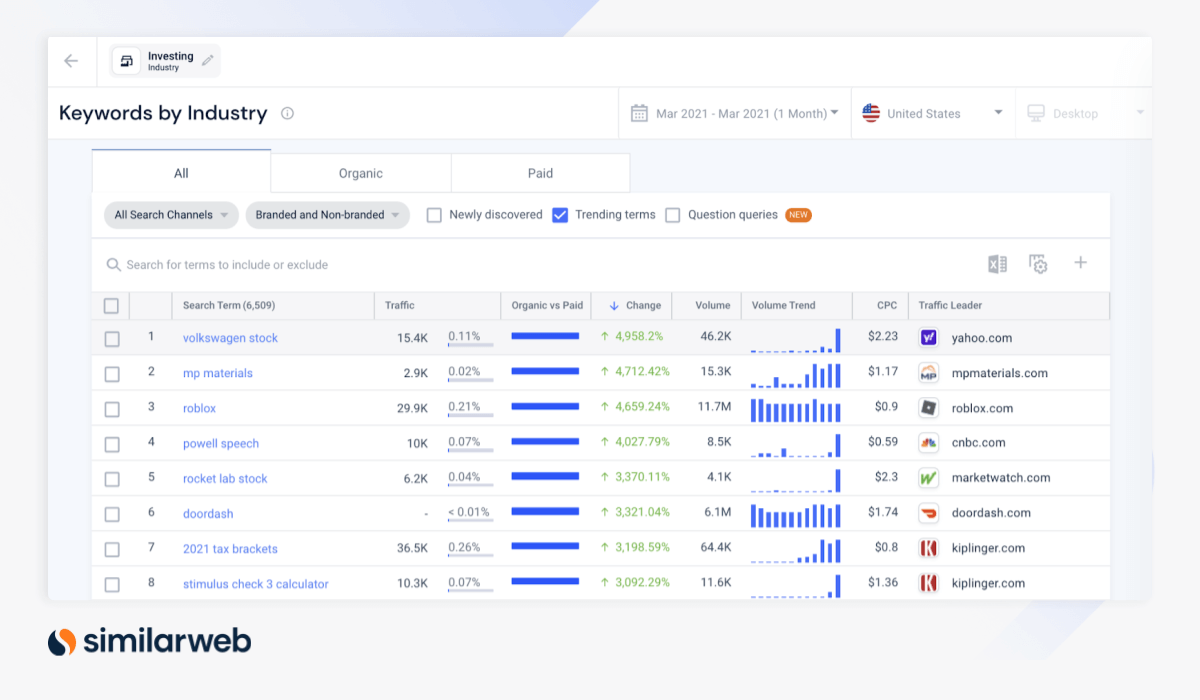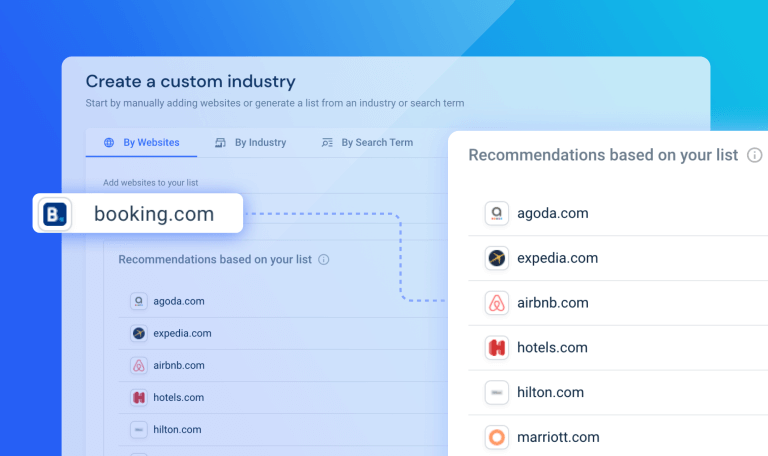How To Win the Consumer Credit Game This Holiday (4 Tips)

Last year, online spending surged 49% year-over-year (YoY) during the holiday season despite economic uncertainty. Signs point to even higher spending this year, and with that, opportunities in consumer credit.
To help financial services companies leverage end-of-year consumer behavior, we’ve put together some quick tips you won’t want to miss using data from Similarweb Research Intelligence and Shopper Intelligence.
1. Prepare for increased spending
Spending patterns in 2021 indicate that consumers may borrow to fund holiday shopping sprees.
In Q2, millions of Americans stopped receiving coronavirus relief checks. But, this didn’t stop them from spending on non-essential items including durable goods, like electronics, and nondurable, fast-moving CPG products, like cosmetics, which increased 13% and 13.9% respectively.
It’s not surprising then that interest in credit cards is already climbing. Users searched for credit card-related terms 11 million times in August, indicating usage of funds beyond personal bank accounts – this search volume even outpaced the 2020 holiday season, by 9%.
Additionally, credit card balances rose 11% from April to May 2021, the largest jump in five years, on an annualized basis.
Strong consumer confidence also indicates that an increase in debt is what’s fueling spending. In fact, 44% of Americans said that they were willing to take on debt for non-essential purchases, like dining and entertainment, in the second half of 2021. The merriment of the holiday season could lead this number to spike even higher.
Jamie Dimon, JP Morgan’s CEO, also recognizes this positive consumer attitude on the bank’s earnings call:
“The pump is primed…The consumer, their house value is up, their stocks up, their incomes are up, their savings are up, their confidence up.”
With confidence higher than in 2020 and consumption levels rising, payment methods have also transformed, making it particularly important for financial services companies to be savvy in their holiday strategy to come out ahead of the competition.
2. Level up to compete with soft credit
Both the finance and eCommerce industries are being transformed by Buy Now Pay Later (BNPL), also called point-of-sale loans. With BNPL, consumers only need a soft credit check in order to pay for purchases in installments.
Megaretailer Amazon announced that it partnered with Afterpay, one of the fastest-growing payment providers, this fall (the company was also acquired by Square for $29 billion around the same time). The partnership will allow Amazon customers to pay for purchases over $50 in installments – a milestone in modern online shopping.
Consumer appeal
The BNPL industry allows shoppers to space out payments, often without paying interest. The soft credit check needed for these programs is unlikely to impact credit scores. As such, search volume for “buy now pay later” nearly doubled from 33,719 in October 2020 to 64,936 in September 2021, reflecting exploding demand for this payment option.
eCommerce appeal
RBC Capital Markets estimates that point-of-sale loans increase retail conversion rates 20% to 30%, and average order value (AOV) between 30% and 50%.
This boost in AOV also aligns with the growing premium tastes of consumers. Across Amazon categories, year-over-year (YoY) revenue grew 27.7% in September, while YoY sales growth lagged nearly 10 percentage points (ppts), indicating consumers are spending more per product.

YoY revenue growth exceeds sales on Amazon showing consumers are spending more per purchase (via Shopper Intelligence)
3. Promote low-interest cards
If consumers can pay 0% interest with BNPL, why should they enroll in credit cards with higher interest and greater debt risk?
It’s up to banks to answer that question by promoting low-interest cards with effective, targeted messaging. Here’s how:
Create targeted content
Outside of direct and internal traffic, organic search is the highest driver of clicks. Because the need is often the same for consumers, ‘low interest,’ ‘0% APR,’ and ‘balance transfer’ should be on the same landing page.

Develop targeted content, reflecting consumer demand for low-interest rates
4. Invest in the right keywords
After being curtailed during the pandemic, banks’ paid ad spend is up with 295,000 paid clicks on top credit card keywords in August. Affiliates and credit card providers both bid heavily on low-interest-related keywords so it’s important for banks to accurately research and choose the right keywords to compete in the highly competitive market.
Pro tip: Use tools like Similarweb Competitive Intelligence to analyze trending keywords, see what your competitors are bidding on, and gain other keyword intelligence.

Sample Digital Research Intelligence Dashboard: Trending Keywords, Investing
Consider partnering with affiliates
Financial services can also consider teaming up with top affiliates that are receiving a high traffic share for targeted, top search terms. Credit Karma, Nerd Wallet, and WalletHub, for instance, all rank among the top 10 websites for the most traffic share for credit-related keywords.

Traffic share for top credit card keywords via Similarweb Digital Research Intelligence
Final thoughts
Spending is up, so it’s key for financial services companies to have the right data to tailor their consumer credit strategies. This applies year-round, not just the holiday season.
We used Similarweb Digital Research Intelligence and Shopper Intelligence to put together our analysis. To get your own insights for a happy holiday, schedule a demo today.
Get ahead of game-changing consumer trends
Contact us to set up a call with a market research specialist








